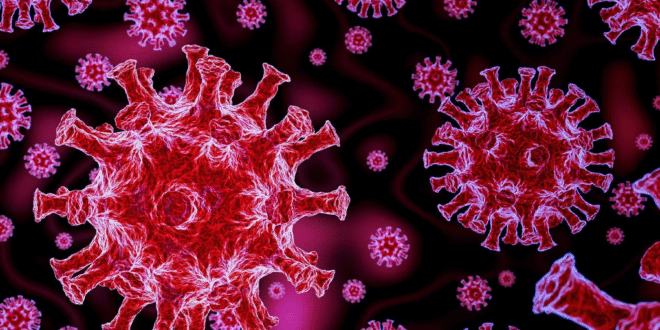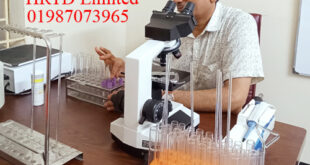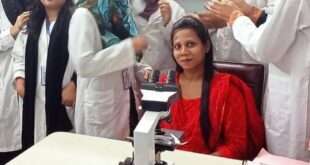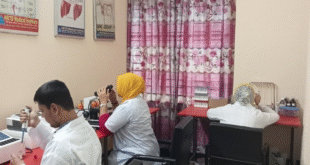Coronavirus COVID-19

Introduction
The coronavirus disease (COVID-19) is one of the most significant global health crises in modern history. Emerging at the end of 2019, this novel virus quickly spread across the world, affecting millions of lives and disrupting economies, education, and healthcare systems. At HRTD Medical Institute, we believe that understanding the nature, transmission, prevention, and treatment of COVID-19 is crucial for public awareness and preparedness for future pandemics. This comprehensive article provides a scientific yet understandable overview of the coronavirus—its discovery, virology, symptoms, diagnosis, treatment, prevention, and its lasting impact on global health.
What Is Coronavirus?
Coronaviruses are a large family of viruses known to cause illnesses ranging from the common cold to more severe diseases such as Severe Acute Respiratory Syndrome (SARS) and Middle East Respiratory Syndrome (MERS). The novel coronavirus, named SARS-CoV-2, is responsible for the disease COVID-19.
The name “corona” comes from the Latin word meaning “crown,” referring to the crown-like spikes on the virus’s surface when viewed under an electron microscope. SARS-CoV-2 is a positive-sense single-stranded RNA virus belonging to the genus Betacoronavirus. It primarily infects humans and certain animals, targeting the respiratory system.
Origin and History of COVID-19
The first known cases of COVID-19 were reported in December 2019 in the city of Wuhan, Hubei Province, China. Early cases were linked to the Huanan Seafood Wholesale Market, which also sold live wild animals, suggesting a zoonotic origin. The World Health Organization (WHO) declared the outbreak a Public Health Emergency of International Concern on January 30, 2020, and later a global pandemic on March 11, 2020.
While the exact origin of the virus remains under investigation, most researchers believe it originated in bats and possibly passed to humans through an intermediate host such as a pangolin. The rapid human-to-human transmission made COVID-19 a global threat within months.
Structure and Virology of SARS-CoV-2
The coronavirus is an enveloped RNA virus with a spherical shape and distinctive spike proteins on its surface. These spike (S) proteins are responsible for binding to host cell receptors, facilitating entry into the cell.
Key Structural Proteins:
- Spike (S) protein: Binds to the ACE2 receptor on human cells, enabling viral entry.
- Envelope (E) protein: Involved in virus assembly and release.
- Membrane (M) protein: Gives the virus its shape and is crucial for the structural integrity.
- Nucleocapsid (N) protein: Binds to the viral RNA genome and aids replication.
The viral genome of SARS-CoV-2 is approximately 30,000 bases long, encoding several nonstructural and structural proteins that contribute to its replication and pathogenicity.
Modes of Transmission
SARS-CoV-2 spreads primarily through respiratory droplets produced when an infected person coughs, sneezes, talks, or breathes. It can also spread via:
- Airborne transmission: In enclosed or poorly ventilated spaces.
- Surface contact: Touching contaminated surfaces and then touching the face.
- Close contact: Physical contact with infected individuals.
The virus can remain viable on surfaces such as plastic, stainless steel, and cardboard for several hours to days, emphasizing the need for hygiene and disinfection.

Incubation Period and Infectiousness
The incubation period for COVID-19—the time between exposure and symptom onset—is typically 2 to 14 days, with an average of 5 days. Infected individuals can spread the virus even before showing symptoms, which made controlling the pandemic particularly challenging. Asymptomatic carriers also contributed significantly to transmission.
Symptoms of COVID-19
The symptoms of COVID-19 vary widely, ranging from mild to severe. Common symptoms include:
- Fever or chills
- Dry cough
- Fatigue
- Shortness of breath or difficulty breathing
- Loss of taste or smell
- Sore throat
- Headache
- Muscle or body aches
- Diarrhea or nausea
Severe cases can lead to pneumonia, acute respiratory distress syndrome (ARDS), multiple organ failure, and death. The severity depends on factors like age, immune status, and comorbidities such as diabetes, hypertension, and heart disease.
Diagnosis of COVID-19
Accurate and timely diagnosis was critical for managing the pandemic. Common diagnostic methods included:
1. RT-PCR Test (Reverse Transcription Polymerase Chain Reaction)
This is the gold standard test that detects viral RNA from nasal or throat swabs. It provides a definitive diagnosis.
2. Antigen Test
Detects specific viral proteins. It is faster but less sensitive than RT-PCR.
3. Antibody Test
Detects antibodies in the blood, indicating past infection.
4. Chest Imaging
CT scans and X-rays can reveal characteristic lung abnormalities like ground-glass opacities in severe cases.
At HRTD Medical Institute, diagnostic procedures are performed under strict biosafety protocols to ensure accuracy and safety for both patients and healthcare workers.
Treatment and Management
There was no specific antiviral treatment for COVID-19 initially. However, several therapeutic approaches were developed to manage symptoms and reduce mortality.
Supportive Care
- Oxygen therapy for patients with low oxygen saturation.
- Mechanical ventilation for critical cases.
- Hydration and nutritional support.
Antiviral and Therapeutic Drugs
- Remdesivir: Shown to reduce recovery time in hospitalized patients.
- Dexamethasone: A corticosteroid that reduces inflammation and mortality in severe cases.
- Monoclonal antibodies: Used to neutralize the virus in high-risk patients.
- Molnupiravir and Paxlovid: Antiviral drugs authorized for emergency use.
Plasma Therapy
Convalescent plasma from recovered patients was used experimentally, though its efficacy was limited.
Vaccination: The Turning Point
Vaccination became the most powerful tool in controlling COVID-19. Several vaccines were developed in record time using different platforms:
1. mRNA Vaccines
- Pfizer-BioNTech and Moderna
- Use genetic code to produce spike proteins that trigger an immune response.
2. Viral Vector Vaccines
- Oxford-AstraZeneca and Johnson & Johnson
- Use harmless adenoviruses to deliver spike protein genes.
3. Inactivated Virus Vaccines
- Sinopharm, Sinovac, Covaxin
- Use killed virus particles to elicit immunity.
4. Protein Subunit Vaccines
- Novavax
- Contain purified pieces of the virus.
Mass vaccination campaigns across the world saved millions of lives. At HRTD Medical Institute, educational programs were conducted to spread awareness about vaccine safety, effectiveness, and the importance of herd immunity.
Variants of SARS-CoV-2
The virus continued to mutate, resulting in several variants of concern (VOCs):
- Alpha (B.1.1.7) – First identified in the UK. More transmissible.
- Beta (B.1.351) – Originated in South Africa.
- Gamma (P.1) – First detected in Brazil.
- Delta (B.1.617.2) – Highly transmissible and caused global surges.
- Omicron (B.1.1.529) – Noted for immune escape and rapid spread.
These variants posed challenges for public health strategies and vaccine effectiveness, prompting booster campaigns and continued surveillance.
Impact of COVID-19 on Global Health
1. Healthcare Systems
Hospitals worldwide were overwhelmed with patients, leading to shortages of ICU beds, oxygen, and medical supplies. Healthcare workers faced extreme stress, burnout, and risk of infection.
2. Economic Impact
Global economies suffered massive losses due to lockdowns, travel bans, and supply chain disruptions. Millions lost jobs, and small businesses faced collapse.
3. Education
Schools and universities were forced to close, leading to a rapid shift toward online learning. Institutions like HRTD Medical Institute adopted hybrid education models to continue medical training safely.
4. Mental Health
Isolation, fear of infection, and uncertainty caused widespread anxiety and depression. Mental health awareness programs became essential during the pandemic.
Public Health Measures
To control transmission, governments and organizations implemented a range of preventive measures:
- Wearing face masks
- Hand hygiene with soap or sanitizer
- Social distancing
- Avoiding crowded places
- Quarantine and isolation of infected individuals
- Travel restrictions and lockdowns
Public cooperation was key to the success of these measures.
Laboratory and Research Role
At HRTD Medical Institute, continuous research and laboratory diagnostics played a significant role in understanding the virus. Our institution provided hands-on training to students and professionals on RT-PCR testing, sample collection, biosafety, and data interpretation.
We also emphasized the importance of biomedical research, vaccine technology, and genomic sequencing for future preparedness.
Role of Healthcare Professionals
Doctors, nurses, laboratory technologists, and paramedics were the true heroes of the COVID-19 pandemic. Their dedication, sacrifice, and professionalism saved countless lives. At HRTD Medical Institute, we honor and train the next generation of healthcare professionals to uphold these values in times of crisis.
Post-COVID Complications
Many patients continued to experience symptoms long after recovery, known as “Long COVID.” Common post-COVID issues include:
- Fatigue and weakness
- Shortness of breath
- Cognitive dysfunction (“brain fog”)
- Heart and lung complications
- Depression and anxiety
Research continues to understand these long-term effects and develop rehabilitation programs.
Lessons Learned from the Pandemic
COVID-19 taught humanity several valuable lessons:
- Global Health Cooperation is Essential: Pandemics require unified international efforts.
- Investment in Public Health Infrastructure: Strong healthcare systems can mitigate crisis impact.
- Science and Technology Matter: Rapid vaccine development showcased scientific progress.
- Preparedness Saves Lives: Early detection, surveillance, and communication are key.
- Education and Awareness: Institutions like HRTD Medical Institute play a vital role in spreading accurate health information.
Preventive Measures and Personal Protection
To reduce the risk of infection:
- Get vaccinated and receive booster doses.
- Wash hands regularly with soap or sanitizer.
- Wear masks in crowded areas.
- Maintain physical distance.
- Avoid touching face unnecessarily.
- Stay home if sick and get tested.
Public awareness and responsible behavior remain the first line of defense.
Future Outlook
While the worst phase of the pandemic may be over, SARS-CoV-2 is expected to remain endemic, meaning it will continue to circulate like the flu. Continuous vaccination, surveillance, and research are necessary to prevent future outbreaks.
At HRTD Medical Institute, we continue to educate students, healthcare professionals, and the public about virology, pandemic management, and laboratory diagnostics. We emphasize preparedness for emerging infectious diseases through evidence-based practices and modern laboratory techniques.
Conclusion
The COVID-19 pandemic reshaped the world in ways never imagined. It tested global healthcare, governance, and humanity’s resilience. Through science, collaboration, and education, the world managed to contain and adapt to this unprecedented crisis.
HRTD Medical Institute stands committed to advancing medical education, laboratory training, and public health awareness to prepare future generations for any health emergency. Understanding the coronavirus, its biology, and preventive measures is not just essential for medical professionals but for everyone striving to live in a healthier, safer world.
Final Words from HRTD Medical Institute
As an institution dedicated to excellence in healthcare education and diagnostics, HRTD Medical Institute continues its mission to build a knowledgeable, skilled, and responsible healthcare workforce. By studying the coronavirus and its impact, we aim to contribute to a world that is better prepared, more informed, and more compassionate toward health and humanity.
 Pathology Training Institute in Bangladesh Best Pathology Training Institute in Bangladesh
Pathology Training Institute in Bangladesh Best Pathology Training Institute in Bangladesh




